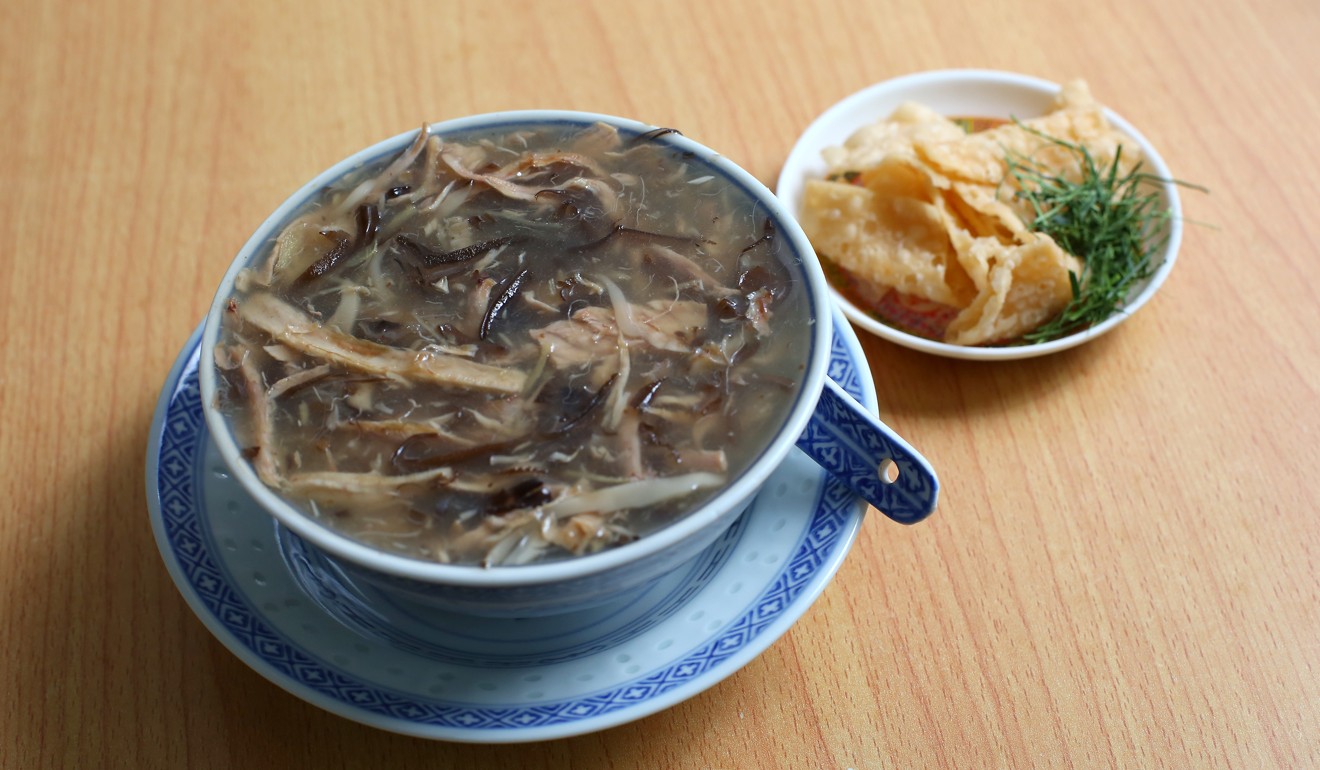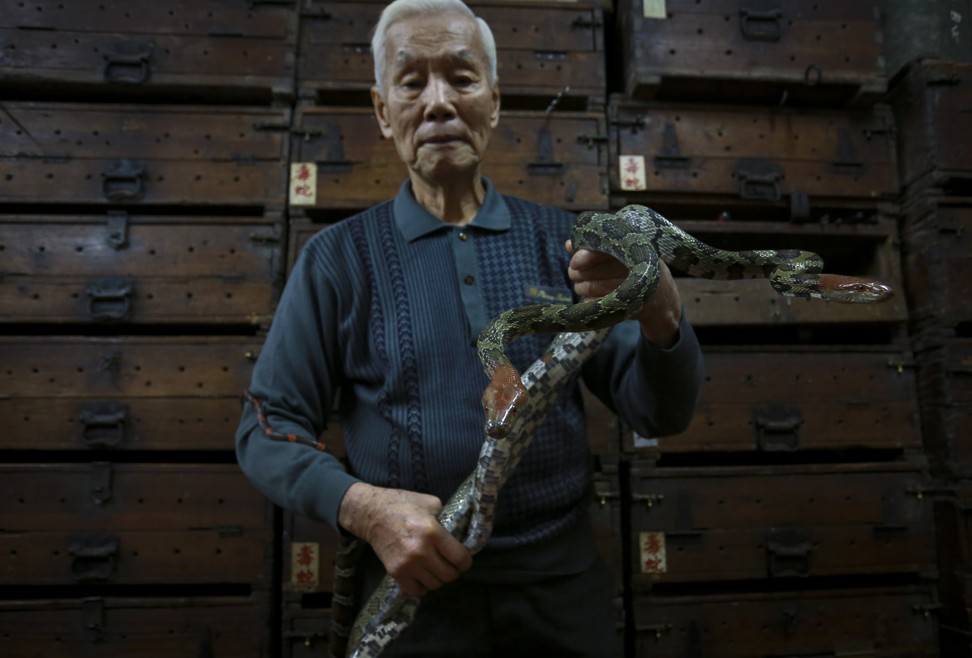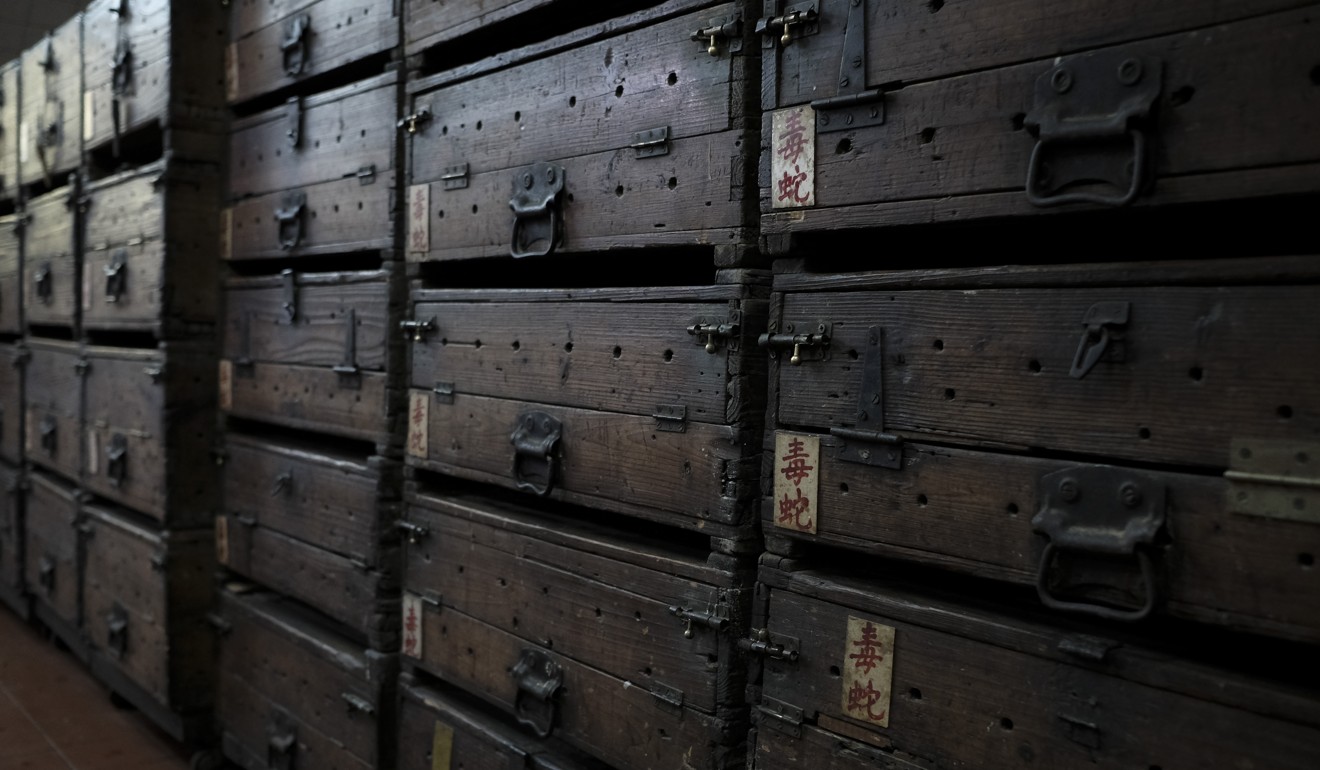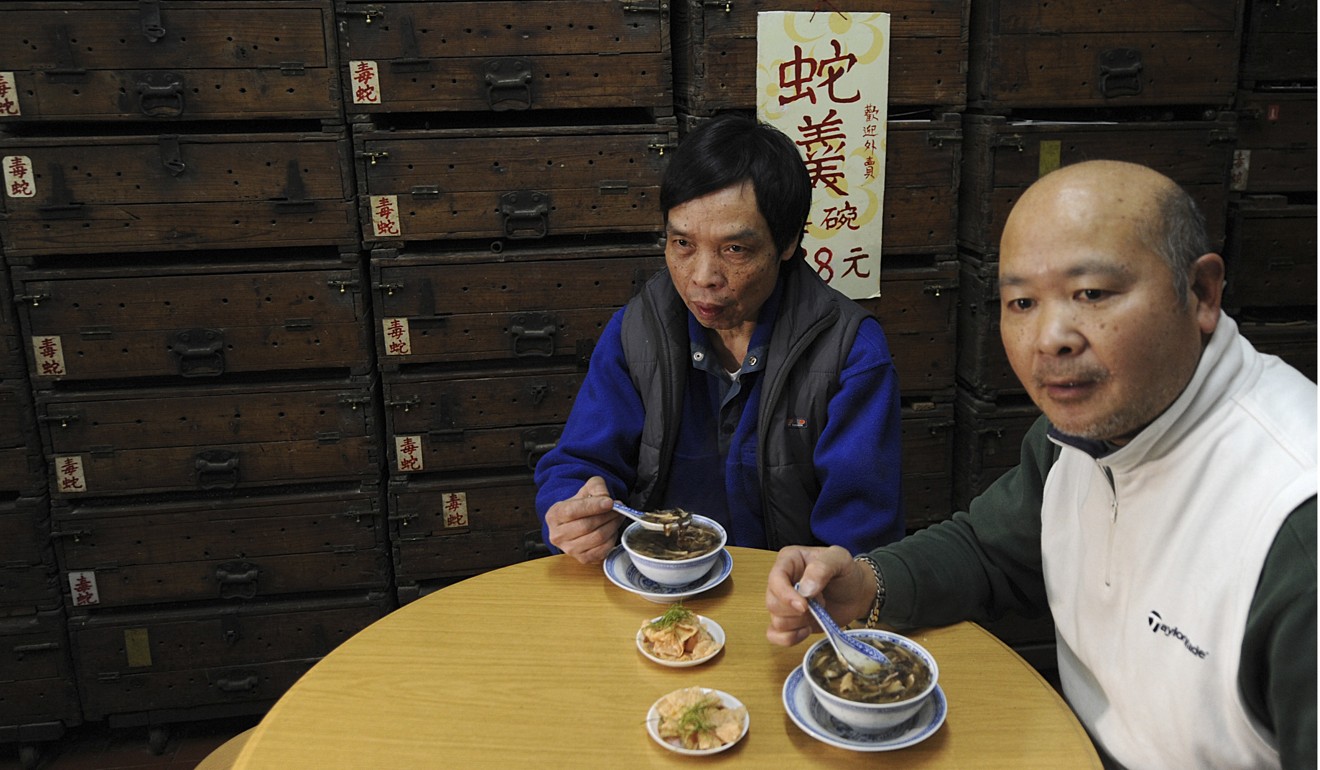
Snake soup served at She Wong Lam. Photo: Edmond So
Lo says there was a Chinese opera theatre in Sheung Wan in the 1960s, close to She Wong Lam, and opera singers would patronise the shop regularly, downing snake gallbladder with alcohol to boost their stamina.
Celebrities such as actor Stephen Chow Sing-chi and former senior police officer Tsang Kai-wing (actor Eric Tsang Chi-wai’s father) were regular visitors. Lo says Chow would tell the staff to contact him when they had a particularly large cobra in stock, such was his appetite for the snake.
Historian Cheng says he has tried the reptile’s gallbladder, which his friends used to buy regularly from other snake shops. “They put it in a spoon, or a shot glass, and added alcohol to it,” he says.
“One time a group of us drank the gallbladder of three different snakes mixed with alcohol … it was translucent green in colour and tasted bitter. People think it helps you become physically stronger, but the gallbladder has bacteria in it,” he says.
Despite She Wong Lam’s success, Lo’s elders were acutely aware of how important it was that a member of the next generation learn the snake trade if the business was to continue.
“My great uncle asked me when I was in my 20s if I would go into the business, otherwise no one else would do it. But I have my life in Canada. I’m 50 years old now and I don’t even live there [in Hong Kong],” he says.

Mak extracts the gallbladder, and then makes the shop’s signature snake soup. Photo: James Wendlinger
Lo points out that other traditional trades in Hong Kong, such as making lanterns, bamboo noodles, hand-carved mahjong tiles, and neon signs, are also disappearing.
The younger generation move away and can’t come back. [Old] Hong Kong will disappearLO TIN-YAM
“The younger generation move away and can’t come back,” he says. “[Old] Hong Kong will disappear and instead have shops like Zara, McDonald’s and Fairwood, especially with rent being so expensive.”
A search on restaurant guide OpenRice shows 36 restaurants with the Chinese character for “snake” in their name still open in Hong Kong, at least four of them with more than one location. They may not necessarily be specialists like She Wong Lam, however, nor have live snakes on the premises.

Snake boxes with the word ‘poisonous’ on them at She Wong Lam in Sheung Wan. Photo: James Wendlinger
Historian Cheng thinks there is still a decent number of places to get a bowl of snake soup, and doesn’t expect them all to close any time soon. He says the owners of Shia Wong Hip in Sham Shui Po, for example, have taught their siblings the snake trade, and adds there are still many snake shops in that neighbourhood and in Yau Ma Tei.
After the closure of She Wong Lam, the Lo family, which owns the shop space, will rent it out. In the meantime, Lo says, they have contacted the Hong Kong Museum of History about collecting the snake cabinets, cages and tables. The wooden cabinets are more than 100 years old.

Diners enjoy bowls of snake soup at She Wong Lam. Photo: AFP
Lo says Mak designed his own pocket knife to make a sharp slit to extract the snake’s gallbladder, and to skin it quickly and efficiently. According to Cheng, designing their own knives is common practice among those in the snake business.
For Lo, the closure of She Wong Lam is also the end of a long chapter in the family’s history, and tinged with sadness. Five years ago, Hong Kong public broadcaster RTHK made a documentary featuring Lo and his son Lo Yun-hei, then three years old, visiting the shop. At the time he hoped the business would continue to the fifth generation.
The reality is that the family respects Mak’s wishes to retire, and Lo hopes to keep the shop’s name alive. “I do have the intention to move back to Hong Kong when I retire, and I still have the rights to the name, so maybe I’ll open a restaurant with the same name,” Lo says.








 Reply With Quote
Reply With Quote